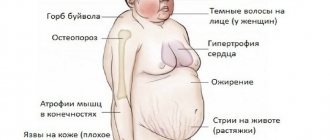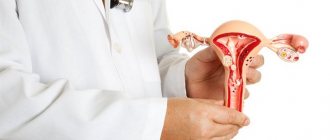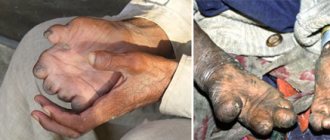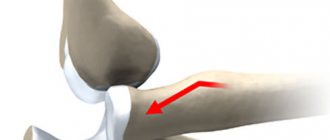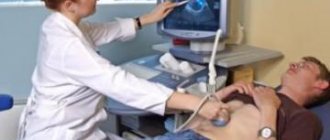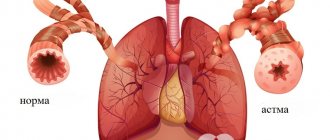Perforating damage to the wall of the stomach, which leads to the leakage of its contents into the abdominal cavity, is called a perforated gastric ulcer. Pathology refers to acute surgical conditions and requires emergency medical care. Peak occurrence occurs between 40 and 60 years of age. In this case, the perforation is the result of an acute or chronic gastric ulcer. Men suffer from the pathology approximately 10 times more often. Perforation of the stomach walls is possible against the background of complete well-being. Isolated cases are also recorded among the child population. Due to the high risk of mortality of the pathology, hospitalization of the patient is necessary as soon as possible after perforation.
What is a perforated gastric ulcer
Perforated (perforated) gastric ulcer (ICD10 code - K25) is one of the most severe pathologies of the abdominal cavity. It is a penetrating injury to the gastric wall that occurs at the site of a chronic or acute ulcer. This complication is common and ranks second after acute appendicitis. Perforated ulcers account for up to a quarter of all consequences of symptomatic ulcers and peptic ulcer disease. This condition is referred to as the “acute abdomen” symptom complex.
This disease occurs in all age categories, including children, but perforation of a stomach ulcer occurs more often in men in the age group of 20-50 years than in women.
In a fairly short period (several hours), the patient develops purulent inflammation of the abdominal cavity. In the absence of prompt assistance, the disease can be fatal. With a perforated ulcer, as a result of recurrent inflammation, a through hole appears in the walls of the digestive organs. Such a defect can appear on the walls of the esophagus, in the stomach, in the intestines. But most often, perforation occurs in the lower part of the stomach or in the duodenal bulb adjacent to it. The size of the perforated hole can reach up to 10 cm in diameter.
If a hole appears inside the organ, severe bleeding may occur. The main danger is that the contents of the stomach or intestines end up in the abdominal cavity.
As a result of the bacterial and chemical influence of harmful substances in the peritoneum, peritonitis (purulent inflammation) develops. Since this process develops at lightning speed, the absence of first emergency aid can lead to death.
Reasons for education
The main reason for the development of pathology is the presence of peptic ulcer. When hydrochloric acid acts on the affected area of the wall of the duodenum or stomach, all its layers are destroyed. Factors that provoke the disease are:
- Infection with the bacterium Helicobacter pylori.
- Overfilling of the stomach with food, which causes stretching of the walls.
- Consumption of foods that irritate the mucous membranes.
- Frequent and prolonged stress. People who constantly live in a state of nervous tension are much more likely to experience what a perforated ulcer is.
- Smoking.
- Physical overexertion, as a result of which the pressure in the stomach increases.
- Uncontrolled use of certain medications. If it is necessary to use them, patients with peptic ulcers are simultaneously prescribed drugs that reduce the production of hydrochloric acid.
- Frequent drinking of alcohol. Strong alcoholic drinks damage the gastric mucosa.
- Smoking stimulates the production of hydrochloric acid.
- Violation of the eating regimen, the predominance of fried, spicy, smoked foods in the diet are common causes of the disease.
Another factor in the perforation of a stomach ulcer may be a hereditary predisposition, when the mucosal defect is genetically determined.
Signs of a perforated ulcer depend on the stage of the disease.
The initial period is called chemical peritonitis. Its duration is about 5 hours. Signs of a perforated ulcer include:
- Acute pain that is localized near the navel, gradually spreading throughout the abdomen.
- Pallor of the skin, cold sweat.
- The patient's breathing becomes rapid and blood pressure decreases.
- The muscles of the anterior abdominal wall are very tense. Even mild palpation causes increased pain. The condition is alleviated by lying on your side (usually on the right) with your legs bent and pressed to your stomach.
The second period is characterized by a decrease in the intensity of the pain syndrome, when the symptoms of a perforated ulcer disappear and an imaginary improvement occurs. Muscle tension weakens, even with palpation there may be no pain. However, body temperature rises, and a high content of leukocytes is detected in the blood. The absence of peristalsis sounds indicates toxic intestinal paresis. Percussion of the abdomen determines the presence of free fluid in it. There is a gray coating on the surface of the patient's tongue. If medical care is not provided at this stage of a perforated stomach ulcer, the condition begins to rapidly deteriorate.
The third period of the disease begins approximately 12 hours after the perforation occurred. At this stage, with a perforated gastric ulcer, the symptoms are expressed in the form of intoxication, accompanied by severe vomiting, which leads to dehydration. Body temperature drops sharply from 39–40⁰С to 36.6⁰С. The abdomen enlarges as a result of the accumulation of free gas and liquids in it. The volume of urine produced decreases, then stops altogether. Irreversible changes occur when treatment in rare cases ends with a positive outcome.
Types of perforated ulcers
Perforated ulcers are divided depending on:
- Etiology. A distinction is made between perforation in a chronic or acute form of the disease, caused by exposure to pathogenic bacteria, impaired blood circulation, or an existing malignant formation.
- Location: perforation of the ulcer can form on the posterior or anterior wall of the stomach, in the area of curvature, on the duodenum.
- Clinical manifestations. The classic option is when a breakthrough occurs inside the abdominal cavity; the atypical option is the entry of stomach contents into the retroperitoneal region, as well as perforation with gastric bleeding.
In addition to these types, perforation of a stomach ulcer is divided into 3 stages - chemical, bacterial, diffuse purulent.
Causes (etiology) of perforated ulcers
The occurrence of a perforated ulcer is very dangerous. Many deaths occur in cases where the diagnosis was made too late, or when the patient ignored the rules of treatment and recommendations for recovery in the postoperative period.
The following factors contribute to perforation of the wall of the digestive organ:
- lack of treatment for exacerbation of ulcers;
- poor nutrition, lack of diet. Abuse of fatty foods, eating very hot or cold food, prolonged fasting or overeating;
- heavy physical activity and increased intra-abdominal pressure;
- constant mental stress and frequent stressful situations;
- disorders in the body's immune system;
- prolonged use of antibacterial drugs, which have a strong effect on the microflora of the digestive tract;
- frequent smoking;
- chronic alcoholism;
- hereditary predisposition;
- prolonged use of salicylic acid and glucocorticosteroids.
Operation and prognosis
For the successful completion of any operation, it is important to diagnose the disease in time, identify all complications and prepare data for surgeons. In the case of ulcerative perforation of the stomach, there is little information about the current condition of the patient; doctors have to make thoughtful, important decisions in the process of work. But, even taking into account such information complexity, the outcome of the operation is 92-98% positive. Re-development of a perforated ulcer in this area due to poor quality work occurs only in 2% of cases.
There is a sad pattern: if the operation time exceeds the established 12 hours, then the probability of death increases to 40%.
Signs of a perforated ulcer
In the presence of a perforated ulcer, the intensity of the symptoms that appear will depend on the clinical form of the perforation. She may be:
- typical, when gastric contents immediately enter the abdominal cavity (diagnosed in 80-95% of cases);
- atypical (covered perforation), when the resulting perforation is closed by the omentum or organ that is nearby (about 5-9%).
The following symptoms may indicate an impending perforation:
- chills;
- intensification of existing pain;
- nausea and vomiting - “unreasonable”;
- dry mouth.
Then the picture of the disease suddenly changes. The patient experiences:
- intense burning (dagger) pain;
- general weakness;
- increased, then decreased heart rate;
- a drop in pressure (arterial), with a possible loss of consciousness, even with the possible development of a state of shock.
The irradiation of pain depends on the location of the ulcer: with a pyloroduodenal ulcer, the pain is radiated from the right to the arm (scapula or shoulder), with an ulcer in the area of the fundus and body of the stomach - to the left.
When an ulcer breaks out in the posterior wall of the stomach, hydrochloric acid enters the omental bursa or the tissue of the retroperitoneal space, because of this the pain syndrome is almost not expressed.
Classification
The typology of perforated ulcers can be systematized according to several parameters.
By etiology:
- Perforated ulcer of an acute nature.
- Perforated ulcer of a chronic nature.
- Perforation when local blood flow is disrupted.
- Perforation caused by exposure to helminths.
- Perforation as a consequence of the action of a malignant tumor on the gastric layers.
By localization:
- Perforation of the cardiac, antral, pyloric part of the stomach.
- Perforation of the duodenum.
According to clinical symptoms:
- Perforation of a nonspecific nature: into a cavity clearly limited by two adhesions, omentum, retroperitoneal region, omental female.
- Perforation with bleeding into the digestive system or abdominal cavity.
- Perforated ulcer with effusion of gastric contents into the abdominal cavity or other parts of the gastrointestinal tract.
According to the periods of development of peritonitis:
- Primary period (chemical peritonitis).
- The period of bacterial initiation and reproduction.
- The period of development of the inflammatory process with relatively favorable symptoms.
- A period of blood sepsis with diffuse purulent peritonitis.
Stages of pathology
The classic picture of manifestations of a perforated ulcer can be observed when it breaks through into the free abdominal cavity. It distinguishes 3 stages of development:
- “abdominal shock” (chemical inflammation);
- latent period (bacterial inflammation);
- diffuse purulent peritonitis.
Abdominal shock . At this time, the patient feels a “dagger” pain in the abdominal area. Vomiting is possible, the patient has difficulty getting up, cold sweat may appear, and the skin becomes pale. Breathing quickens, then becomes shallow, pain appears when taking a deep breath, blood pressure is reduced, while the pulse is within the normal range. With a perforated duodenal ulcer, there is tension in the abdominal muscles, so palpation is difficult.
Hidden period . The duration of the second period is 6-12 hours. The symptoms are:
- facial skin acquires a normal color;
- temperature, pressure, pulse become normal;
- shallow breathing, coated and dry tongue are absent;
- the pain subsides.
Peritonitis . By the end of the first day, the disease transitions to the stage of diffuse peritonitis. The pain that has subsided returns in an even more intense form and becomes unbearable. The patient suffers from nausea and vomiting. Hiccups may occur. The temperature rises to 38. The abdomen is swollen, bowel sounds during listening are very insignificant or not heard at all.
Signs and stages of perforation
Perforation of the gastric wall is characterized by a clear clinical picture. The main symptom is a burning, “dagger-like” pain in the abdomen. Patients describe their sensations as from “swallowed boiling tar.” The discomfort is so intense that the patient cannot move and tries to take a position in order to somehow alleviate the condition. Painful shock can provoke vomiting, clouding of consciousness, dizziness, and intense nausea. A fifth of patients note increased pain in the epigastric zone several days before the attack.
The patient's appearance also changes. The skin becomes pale and the lips become cyanotic (bluish). The body is covered with cold sweat, the facial features become sharper, the eyes become sunken. All patients report a feeling of dry mouth. The tongue and lips are covered with a grayish coating. Most patients experience a drop in blood pressure, a decrease in heart rate, and shallow breathing.
Features of manifestations depend on the stage of the perforated ulcer and the direction of perforation. Based on the clinical picture and the degree of spread of the inflammatory process, doctors distinguish 3 periods of gastric perforation.
Period one (chemical peritonitis or primary shock)
The onset of a perforated ulcer is characterized by the sudden onset of burning pain in the epigastric region. They are caused by destruction of the gastric wall, entry of gastric contents into the abdominal cavity and acid burn. Gradually the pain spreads to the entire abdomen. The localization of the most unpleasant sensations depends on the direction of the perforation:
- if the posterior wall or cardiac part of the stomach is damaged, pain in the depths of the abdomen is less pronounced;
- if the lesser curvature and gastroduodenal joint are damaged, pain radiates to the right side of the abdomen, right scapula or collarbone;
- if the greater curvature is damaged, the pain spreads to the left side of the body.
When the gastric contents reach the lower part of the abdominal cavity, severe pelvic pain appears. Severe pain forces the patient to take a forced position of the body. The discomfort subsides somewhat when the patient takes a supine position on the right side with the legs drawn up to the body.
The patient turns pale, his face takes on a pained look, and his skin becomes covered in cold sweat. Breathing becomes noticeably quicker and shallower, blood pressure decreases and the pulse slows down somewhat. The anterior abdominal wall tenses and takes on a board-like appearance. At the same time, the transverse ligaments contract, and the patient’s abdomen has a scaphoid surface. The folds are most pronounced above the perforation site.
With an ulcer, “paradoxical breathing” is determined. The anterior abdominal wall does not participate in inhalation; it can even be drawn in when the lungs are filled with air. There is also a phenomenon when the patient cannot draw an additional volume of air into the lungs after a normal inhalation, which occurs normally without any problems.
The anterior abdominal wall is very painful, the patient cannot touch it on his own, and moves the doctor’s hands away when he tries to palpate the abdomen. The Shchetkin-Blumberg symptom is recorded, when gentle pressure with fingers on the abdomen and abrupt removal of them increases the patient’s suffering. It is typical that in patients with obesity, muscle atrophy, old age, and also in a state of alcoholic intoxication, the characteristic abdominal signs of an ulcer may not be detected.
Period two (imaginary well-being or bacterial peritonitis)
This phase is characterized by a weakening of pain, which is associated with the release of exudate into the abdominal cavity and the elementary “dilution of acid.” An imaginary well-being sets in, the patient feels better, maybe even somewhat euphoric, believing that the suffering is over and his health is getting better. Tension of the abdominal muscles weakens, their soreness decreases, breathing returns to normal, but the Shchetkin-Blumberg symptom persists.
In fact, the situation is much more complicated. Due to the entry of food masses and acid into the abdominal cavity and the proliferation of microbes there, extensive peritonitis begins. Increasing intoxication is indicated by the patient’s weakness, gradual increase in body temperature, increased nausea, and dry mucous membranes. The tongue becomes covered with a gray coating. The pressure further decreases, the patient asks to be left alone.
Due to toxic paralysis of the intestinal muscles, intestinal peristalsis is absent and intestinal obstruction occurs. Toxins disrupt kidney function, first by increasing urine output, which progresses to anuria (lack of urine).
Period three (acute intoxication, purulent peritonitis)
The patient becomes lethargic, drowsy, indifferent, and weakly reacts to external stimuli. Body temperature rises to severe fever, then drops below normal. Breathing quickens and becomes shallow. Pain in the anterior abdominal wall returns. The patient's abdomen enlarges due to the accumulation of gases and free fluid. There is no urine at all. The skin is pale, acquires a greenish tint, the eyes are sunken, the mucous membranes are dry, the patient suffers from severe thirst. At this stage, even full-fledged medical care rarely gives improvement, since the entire body suffers from intoxication, sepsis, multiple organ failure, and cerebral edema are possible.
Special symptoms of ulcers
An unusual clinical picture may develop if an ulcer has opened in the cardiac part of the stomach. In this case, the gastric contents leak into the retroperitoneal tissue, causing its inflammation. The process is accompanied by the active release of gas, which causes the subcutaneous fatty tissue in the chest area to swell. When you press on the convex areas with your palms, a characteristic sensation and sound arises, similar to “snow crunching in frosty weather.”
The ulcer can perforate into other internal organs. Most often this is observed with a duodenal ulcer that opens into the pancreas. In this case, massive internal bleeding occurs, the patient suffers from severe pain, diarrhea and uncontrollable vomiting of blood.
If the ulcer has opened into the lesser or greater omentum (which is adjacent to the stomach), the perforation may partially or completely close. In this case, a blurred clinical picture is possible, which complicates the diagnostic process and can subsequently develop into irreversible complications.
Useful information: Pancreatitis - symptoms, treatment (8 drugs), diet, menu, prohibited foods, herbal medicine. First aid for an attack of acute pancreatitis
Diagnosis of the disease
Diagnosis of a perforated ulcer begins with a personal examination of the patient and collection of anamnesis. To avoid misdiagnosis, a complete examination should be performed:
- X-ray examination;
- endoscopy. It is used when the results of X-ray examinations are negative, but there is a suspicion of a perforated ulcer;
- diagnostic laparoscopy. It is considered the most sensitive method for diagnosing perforated gastric ulcers, effusion and gas in the free abdominal cavity;
- CT;
- Ultrasound;
- esophagogastroduodenoscopy. Its use makes it possible to make an accurate diagnosis in nine out of ten patients;
- blood test - biochemistry and general.
Differential diagnosis is carried out with pancreatitis, acute appendicitis, abdominal aortic aneurysm, cholecystitis, myocardial infarction.
Principles of treatment
This disease requires immediate hospitalization. The main way to treat a perforated ulcer is surgery. The main goal is to restore the integrity of the damaged organ and sanitize the abdominal cavity. Types of surgical treatment:
- palliative (the doctor suturing the perforation);
- radical (2/3 of the stomach is directly removed, or the damaged area is excised, and the resulting defect is sutured).
Additional conservative measures include:
- infusion therapy, vasoconstrictor drugs (to eliminate shock);
- antibiotic therapy (to fight bacterial infection);
- prescription of gastroprotectors (to accelerate the healing of the gastric wall).
How to treat a perforated ulcer
Treatment of a perforated ulcer is possible only surgically, and surgical intervention should be performed as early as possible, since if the pathology is diagnosed in the third stage, treatment may no longer be meaningful.
Surgery for this diagnosis is most often performed using classic laparotomy (dissection of the anterior wall of the peritoneum). In some cases, it is possible to suturing a perforated ulcer if it is small. Suturing is done when purulent inflammation lasts more than six hours. Complications are possible after this operation. The postoperative period requires long-term drug therapy for recovery.
Conservative treatment takes place only in two cases:
- with decompensated somatic pathology;
- with a decisive refusal of surgical intervention by the patient.
Mandatory conditions for such treatment are:
- age under 70 years;
- less than half a day from the start of perforation;
- stable hemodynamics;
- absence of tension pneumoperitoneum.
The treatment complex includes pain relief, the use of antisecretory drugs and antibiotics, detoxification and anti-Helicobacter therapy.
Forecast
If within 12 hours from the moment the ulcer perforates, first aid is not provided and there is no surgical treatment, death most often occurs. Emergency care provided in a timely manner for a perforated gastric ulcer increases the chances of a favorable outcome. When suturing a perforated ulcer is performed promptly, it may re-perforate in less than 2% of cases.
The number of deaths after surgery ranges from 5 to 8 percent and depends on the patient’s age, general condition and concomitant diseases.
Diet for pathology
The diet after surgery for a perforated ulcer is based on limiting the consumption of simple carbohydrates, liquids, and salt. On the second day after surgery, it is allowed to drink non-carbonated mineral water, weak tea and fruit jelly with a small amount of sugar.
10 days after the operation, the menu includes mashed potatoes, carrots, and boiled pumpkin. All dishes must be chopped, not spicy, not salty, not fatty. Bread can be added to the diet only after a month.
In general, after surgery, clinical recommendations are to follow a special diet for a period of 3 months to six months.
After switching to a regular diet, it is recommended to adhere to the rules of a healthy diet; it is useful to eat natural foods, such as fresh vegetables and fruits, dairy products, and dietary meat. Smoking and drinking alcohol is strictly prohibited.
Video on the topic:
Symptoms of the disease
- Increased abdominal pain a few days before the ulcer perforates;
- Sudden sharp pain in the abdominal cavity;
- Vomiting (this symptom occurs rarely);
- Rapid shallow breathing;
- Irradiation, that is, return, pain in the arm or shoulder blade, on the right or left - depending on the location of the ulcerative lesion;
- Increased pain when turning the body;
- Pale skin;
- Increased sweating;
- The patient's desire to lie on his side and tuck his knees;
- Decreased blood pressure and pulse.
Methods for treating perforated ulcers
A perforated gastric ulcer can only be treated surgically. Which method the surgeon chooses depends on the age category of the patient, the stage of perforation, concomitant diseases, severity, size of the hole, its location and the degree of the abscess.
The operation is performed under general anesthesia (endotracheal), in rare cases local anesthesia is used. In severe cases, infusions with vasoconstrictor drugs and oxygen inhalation are used.
In very rare cases (when the patient persistently refuses surgical treatment methods, in the absence of a surgeon or the necessary equipment), conservative treatment is performed (Taylor method). The effectiveness of such therapy will be sufficient only in the case of immediate treatment after perforation of a gastric ulcer. Using local anesthesia with a 1% tetracaine solution, a probe is inserted into the stomach, and the abdominal cavity is freed from the spilled contents. Then they connect him to a suction machine for several days. A cold compress is placed on the stomach. Next, antibiotic therapy, painkillers, antispasmodics, therapy against Helicobacter bacteria and detoxification are carried out for seven days. Nutrition is carried out parenterally (through the blood) due to the impossibility of eating in the usual way. Water and electrolyte balance is maintained by infusion.
Treatment of a perforated ulcer with traditional methods is unacceptable; it leads to irreversible consequences, serious complications and death.
Surgical treatment methods:
- simple suturing;
- excision with drainage of the stomach;
- resection;
- suturing with selective proximal vagotomy;
- excision with truncal vagotomy;
- truncal vagotomy with pyloroplasty;
- truncal vagotomy with hemigastrectomy.
Suturing
The simple suturing method is used:
- if an elderly patient has a high risk of developing postoperative complications;
- with concomitant pathologies;
- if the patient is young and has no history of ulcers;
- the time interval from the onset of the disease is less than six hours.
In suturing a perforated gastric ulcer, a double-row suture is used.
The abdominal cavity is opened with a vertical incision and the contents of the stomach that have spilled beyond its limits are removed. The site of the perforation is examined and two rows of seromuscular suture are applied with self-absorbing sutures. Sutures are not placed on damaged areas; only healthy tissue is captured.
In simple suturing of ulcer perforation, the laparoscopic method is used. Be sure to carry out constant aspiration of the stomach and abdominal cavity with a probe.
Required conditions:
- less than 8 hours have passed since perforation;
- hole size less than one centimeter;
- no complications or bleeding;
- highly qualified surgeon;
- availability of necessary equipment.
There are many advantages to the laparoscopic method:
- reduction of postoperative pain;
- shorter rehabilitation period;
- less damage and seams.
Resection of perforated gastric ulcer
This method is used for chronic ulcers, multiple holes, bleeding and pyloroduodenal stenosis. The operation is possible if the surgeon is highly qualified and there is no diffuse fibrinous-purulent peritonitis. Mandatory conditions are: the patient’s age is less than 60 years, the time interval from perforation is less than 6 hours.
Excision of a perforated ulcer
The method is used for large bleeding areas, callous ulcers (long-term non-healing with clear contours), serious condition of the patient, before suturing. Also, the need arises if a tumor is suspected or the possibility of degeneration into it (malignancy). The probability is determined by taking sections of ulcer tissue for study. If there are large holes, part of the stomach is removed and a disability group is assigned.
Suturing using vagotomy
Vagotomy is a dissection of the trunk or vagus nerve. The purpose of the operation is to reduce acidity to speed up the healing of sutures. Vagotomy can be selective, trunk and proximal selective. The safest is the latter due to the excision of only the branch of the nerve responsible for secretion. If vagotomy is not performed, long-term drug treatment is necessary in the postoperative period to reduce acidity.
Vagotomy is performed mechanically or chemically.
Use of pyloroplasty
This operation is used to increase the entrance to the duodenum when there is a perforation in the lower part of the stomach. The method is necessary to maintain pyloric patency. Vagotomy is a mandatory additional intervention.
Symptoms of the disease
Perforation of the stomach wall has 3 main stages:
- State of shock.
- False prosperity.
- Peritonitis.
The immediate stage of shock occurs during perforation and entry of gastric contents onto the layers of the peritoneum. A person feels an unbearable “dagger” pain that appears in the upper layers of the abdominal cavity, which quickly spreads to the entire abdominal area. Most patients at this point begin to thrash and scream. The overall severity of the condition increases rapidly:
- pressure decreases;
- pulse slows down;
- the skin becomes moist, cold and pale;
- the patient takes a forced position - on his side, with his knees brought up to his stomach.
After a certain period of time (about 7 hours), the pain subsides, and in some cases disappears completely. Abdominal bloating gradually increases, it becomes less tense, and bowel sounds disappear on auscultation. Arterial hypotension persists, arrhythmia begins to appear and tachycardia increases. The stage of false well-being can last up to 12 hours.
How does perforation occur?
A perforated duodenal ulcer occurs as a result of ineffective conservative therapy or failure to form scar healing. As a result, instead of healing, a through hole is formed in the duodenum.
More often, perforation of the duodenum affects young men under the age of 40, whose duration of peptic ulcer is more than 3 years.
Duodenal ulcer
The contents of the duodenum penetrate through the perforation into the abdominal cavity, causing inflammation of the peritoneum. The perforated hole is surrounded by fibrinous deposits. In some cases, perforation is accompanied by bleeding from a duodenal ulcer.
The most common location is the area of the duodenal bulb.
In 10% of cases, perforation occurs in the retroperitoneal region or subhepatic space. Such atypical perforation is called covered. Subsequently, a subhepatic or retroperitoneal abscess is formed in this place.
Diagnostics
For a correct diagnosis, it is necessary to collect an anamnesis. The symptoms are similar to an attack of acute appendicitis, cholecystitis, acute pancreatitis, heart attack, pneumothorax. Therefore, it is important to differentiate the diagnosis from other, less dangerous dysfunctions.
First, a gastroenterologist performs a general examination, palpation, and studies complaints.
The research program includes:
- X-ray. To determine the location of free gases in the abdominal cavity and effusion;
- general blood analysis. Detects elevated leukocytes and is a mandatory step in preparation for surgery (leukocytes are detected only at the stage of peritonitis);
- electrogastroenterography. To assess the evacuation function;
- computed tomography of the abdominal organs, with the help of which the location of gas accumulation, fluid and perforation is determined. It has very high information content;
- gastroscopy. Inspection of the stomach walls to determine the location of perforation;
- laparoscopy. It is carried out in cases of difficult diagnosis. It is forbidden to carry out in case of coagulation disorders, excess weight, or in the presence of adhesions;
- echography. Allows you to examine free gases, fluid and hypertrophy of the stomach walls;
- endoscopic examination. This method is used if after X-ray and ultrasound it was not possible to detect a perforation;
- Ultrasound examination of the abdominal organs. The study allows you to see the abscess, fluid, effusion, and is the most effective way to determine perforation and to identify concomitant diseases;
- ECG to assess the functioning of the cardiovascular system.
In the absence of a history, a diagnosis can be made based on the typical features and symptoms that precede perforation of a gastric ulcer: severe pain in the stomach, nausea, vomiting, high fever and chills.
If perforation of a gastric or duodenal ulcer is diagnosed, doctors decide on mandatory hospitalization and surgical intervention.
Course of the disease
Gastric perforation can occur in several forms:
- typical form - with it, gastric contents (partially digested food, gastric mucus, gastric secretions) through a pathological hole that forms in the wall of the stomach, penetrates into the abdominal cavity, reaches the surface of the parietal (lining the stomach from the inside) and visceral (covering the organs of the abdominal cavity) layers of the peritoneum and triggers the development of peritonitis;
atypical form - a perforation forms in the gastric wall, but it is covered by nearby organs and tissues. They can be: the greater omentum (a fatty “apron” hanging freely in the abdominal cavity and covering its organs), the pancreas, the left lobe of the liver, a loop of the small (more often) or large (less often) intestine, folds of the gastric mucosa, a fragment of food;
- form with the development of penetration - in this case, the bottom of the perforation does not open into the abdominal cavity, but “rests” on neighboring organs, the ulcer seems to “crawl” onto them - the process of tissue destruction also begins in them.
Most often, gastric perforation occurs in such locations of this organ as:
- front wall;
- back wall;
- greater curvature
- small curvature.
Therapy
Treatment for confirmed perforated ulcers is surgical. The main goals of therapy are to preserve the patient’s life, eliminate ulcerative defects, and combat peritonitis. Further treatment is aimed at eliminating the underlying disease that led to perforation. Surgery for a perforated ulcer is carried out after careful preparation of the patient - cleansing (draining) the gastric cavity of contents, stabilizing blood pressure.
Before surgery, be sure to evaluate:
- time interval from the onset of the disease;
- location of the ulcer, volume, root cause;
- area of distribution of peritonitis;
- the presence of concomitant diseases.
Perforation of an ulcer is considered an emergency; medical care is provided urgently through surgery, drug therapy and dietary management. In gastroenterological practice, there are cases when perforated ulcers are treated conservatively. But refusal of surgical intervention is possible only if the patient has concomitant somatic ailments of the decompensated type or refuses surgery.
Drug treatment is carried out under the following conditions: the patient is no more than 70 years old, less than 12 hours have passed since the perforation, blood counts are relatively stable. Drug therapy includes taking:
- painkillers by internal administration;
- antibiotics in high doses intravenously or intramuscularly;
- drugs to suppress secretory processes;
- drugs against Helicobacter flora;
- detoxifying agents.
Treatment by surgical intervention is carried out in several options - suturing the perforation, excision of the defect, resection of the organ. In surgical practice, they try to perform organ-preserving operations - suturing or closing the ulcer. Radical methods are more traumatic and are associated with a difficult recovery period after the intervention.
Suturing is carried out if there is a complication in the form of peritonitis and the time since perforation is no more than 6 hours. The method is often used in middle-aged people with a history of acute gastric ulcer. The surgical technique involves removing the defect and suturing the hole by applying longitudinal seromuscular sutures. Installation of temporary drains is mandatory.
Excision of the ulcerative defect is carried out in the presence of pyloric stenosis, massive bleeding, callous ulcers (with a non-healing surface and clear hard contours), and large areas of perforation. Malignancy of an ulcer—degeneration into a malignant formation—is a 100% indication for its excision. Excision can be performed using minimally invasive options (laparoscopy, endoscopy) in the presence of small perforating defects localized on the anterior gastric wall. Simultaneously with the removal of the ulcer, the vagus nerve, which is responsible for the passage of nerve impulses in the stomach, must be ligated.
Resection as a traumatic method of intervention is carried out in the presence of strict indications - large perforated ulcers (with a perforation diameter of more than 20 mm), with callous edges, suspicion of malignant degeneration, recurrent perforations. Resection is not performed on elderly patients (over 65 years old) or those with concomitant serious illnesses (from the gastrointestinal tract, cardiovascular system). Removing part of the stomach leads to disability.
Prevention and prognosis
During perforation, the prognosis is quite difficult, since late diagnosis of this condition sometimes leads to the death of the patient. Among young men, the fatal outcome is about 2-6% (taking into account the clinical picture, time of assistance provided and some other factors); among older people, this rate increases several times.
Prevention of the disease is secondary - it is necessary to promptly diagnose and treat those diseases that could bring the patient to this state.
Complications after surgery for ulcer perforation
After surgery for perforation of a gastric and duodenal ulcer, the following consequences are possible:
- peritonitis;
- disturbance of peristalsis and other functions of the gastrointestinal tract;
- postoperative pneumonia;
- violation of the integrity of the sutures, which creates a risk of recurrent perforation;
- intra-abdominal bleeding;
- cancer at the stitching site;
- deformation of the stomach with subsequent disruption of evacuation function;
- perigastritis;
- periduodenitis;
- polyposis of the stomach and duodenum;
- perivisceritis;
- purulent complications;
- diverticula of the duodenum and stomach.
The most severe complication after surgery can be death. The risk increases if a lot of time is lost after the ulcer perforates and as the patient ages. The chance of a favorable outcome is higher in young patients under 50 years of age.
Diet
In the postoperative period, it is important for patients to follow a diet, the purpose of which is to protect the stomach from increased stress, accelerate the healing process and restore gastrointestinal motility, and prevent recurrence of perforation. A strict diet for a perforated gastric ulcer in the postoperative period can last up to six months. The diet is expanding very slowly.
Principles of dietary nutrition:
- the total number of meals per day is at least 5–6, portions are modest in size (200–250 g);
- the consistency of the dishes is semi-liquid, in the form of a homogeneous puree;
- the optimal methods of preparing dishes are boiling in water or steaming;
- salt is sharply limited;
- The intake of carbohydrate foods and liquids is subject to restrictions.
In the postoperative period, after 48 hours, the patient is allowed to drink water, unsweetened jelly, and slightly sweetened tea. 72 hours after the operation, a decoction of rose hips, ground soups and slimy porridges are introduced into the diet. After 1.5 weeks, the patient can eat vegetable puree from potatoes and zucchini, steamed meat cutlets, and fish soufflé. When you feel well, you begin to introduce dairy products - low-fat cottage cheese, yoghurts without additives. Bakery products are allowed to be consumed after 1–1.5 months.
Persons who have undergone surgery for a perforated gastric ulcer must adhere to the principles of a healthy diet for life. It is prohibited to consume alcohol, spicy foods and pickles with vinegar, food containing dyes and additives (chips, fast food). Failure to eat properly can cause a relapse of the disease.
Risk factors
The reasons that increase the risk of a perforated gastric ulcer are associated with the presence of acute and chronic pathologies of the organ, mainly peptic ulcer. The second most important reason is infection with Helicobacter pylori; with the active proliferation of bacteria in the stomach cavity, an inflammatory process develops, leading to thinning of the mucosa and the appearance of deep defects.
Other reasons are less significant, but can provoke the development of the disease:
- slow blood circulation;
- long-term, low-grade inflammation around defects in the inner epithelial layer of the stomach;
- systemic vascular diseases - atherosclerosis;
- respiratory diseases;
- non-compliance with the work and rest schedule;
- poor nutrition, including overeating, abuse of fatty and spicy foods, fast food;
- long-term treatment with medications with an aggressive effect on the gastrointestinal mucosa;
- regular exposure to traumatic situations, including developed mental disorders;
- drinking alcohol and nicotine for a long period;
- genetic predisposition to damage to the gastric mucosa and duodenum;
- chronic gastrointestinal pathologies.
With a history of gastric ulcer, perforation of its walls can be provoked by:
- relapse of the disease;
- errors in nutrition (eating spicy, salty foods);
- overeating (due to excessive stretching of the stomach cavity);
- increased acidity of gastric secretions;
- intense and sudden physical activity.

